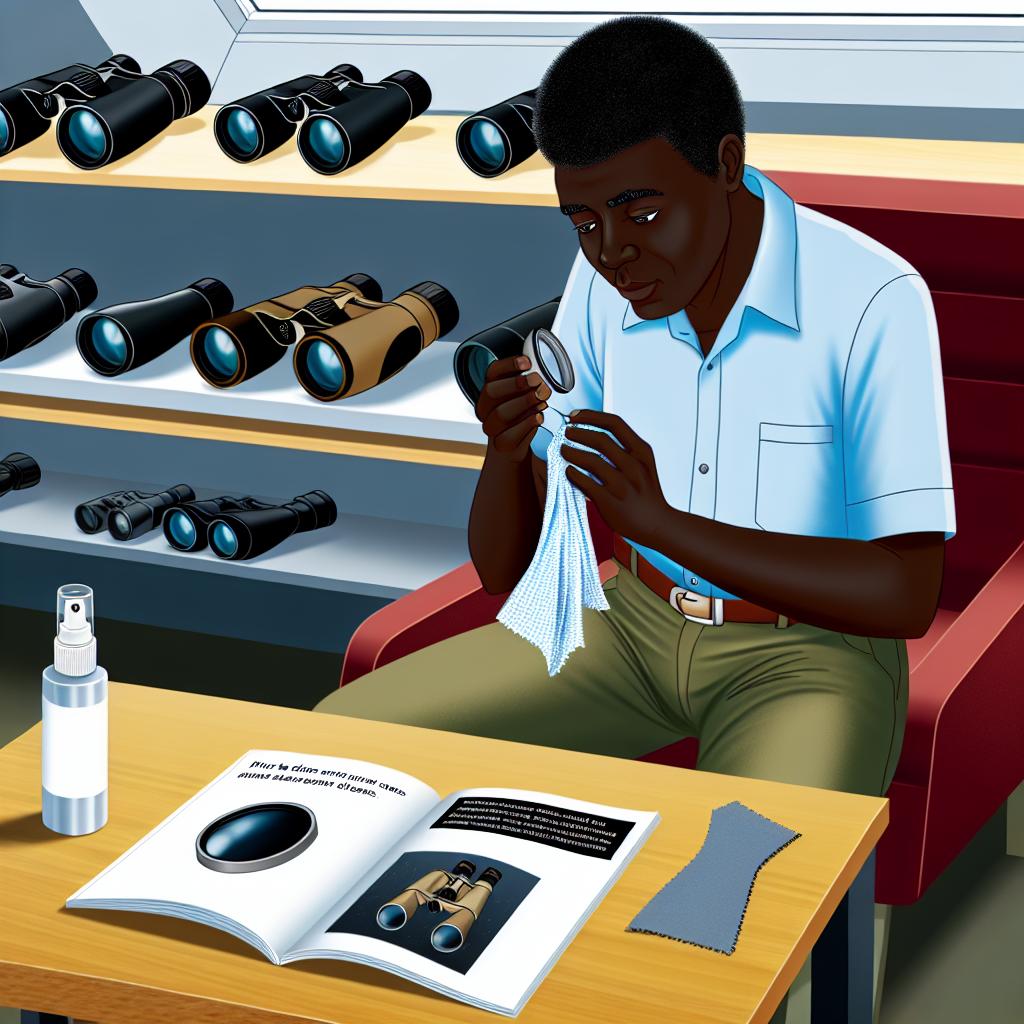Cleaning Binocular Lenses
Maintaining the clarity and quality of your binocular lenses is essential for optimal performance. Proper care involves cleaning them regularly and handling them correctly to avoid scratches or damage. The longevity and effectiveness of binoculars largely depend on ensuring that their lenses remain in pristine condition. Regular maintenance not only enhances visual clarity but also extends the lifespan of the optical instrument.
Tools and Materials Needed
Proper cleaning of binocular lenses requires specific tools and materials that are designed to care for sensitive optical components. Using inappropriate materials can lead to scratches or other permanent damage to the lenses. Below are the essential tools and materials required to maintain your binocular lenses effectively:
– Microfiber cloth: This soft cloth is gentle on lenses and helps prevent scratches. Unlike ordinary tissues or fabrics, microfiber cloths are engineered to trap dust and dirt without causing abrasions on delicate surfaces.
– Lens cleaning solution: A dedicated lens cleaning solution is designed to break down dust and grease without damaging the lens coatings. These solutions are typically formulated to clean thoroughly without leaving streaks or residues that could impair vision.
– Lens brush or blower: These tools help remove loose dirt and dust before wiping the lenses, ensuring that debris is eliminated without friction that might otherwise scratch the surface.
– Soft cotton swabs: Useful for cleaning hard-to-reach areas, cotton swabs allow for precision cleaning in crevices where cloths might be ineffective.
Step-by-Step Cleaning Process
Cleaning binocular lenses requires a gentle and methodical approach to prevent damage and ensure clarity. Following a structured cleaning process helps maintain the integrity of the lenses while achieving optimal cleanliness.
1. Remove Loose Particles: Start by using a lens brush or blower to gently remove any loose dust or debris from the surface of the lenses. This step is crucial as abrasive particles left on the surface might scratch the lens when wiped.
2. Apply Lens Cleaning Solution: Moisten a microfiber cloth with a lens cleaning solution. If the solution is in a spray bottle, it’s advisable not to spray directly onto the lenses to avoid excessive moisture, which can seep into unwanted areas. Instead, spray onto the cloth and ensure it’s dampened evenly.
3. Wipe the Lenses: Carefully wipe the lenses using circular motions, starting from the center and moving outwards. This method ensures even distribution of the cleaning solution and minimizes streaks. The circular motion helps lift and clear residues without concentrating pressure in one spot, which can lead to optical aberrations.
4. Address Hard-to-Reach Areas: Use a lightly moistened cotton swab with the cleaning solution to gently wipe crevices and edges. This step is essential for comprehensive cleaning, addressing areas that a regular cloth cannot reach.
5. Final Inspection: Conduct a thorough inspection of the lenses for any remaining marks or residue. Look for any small streaks or missed areas by holding the lenses up to a light source. If necessary, repeat the cleaning process to achieve optimal clarity.
Maintenance Tips for Binocular Lenses
Proper maintenance extends beyond cleaning. To keep your binocular lenses in excellent condition and ensure they perform at their best over time, adopting a regular maintenance routine is essential. Maintenance encompasses not just periodic cleaning but also attentive handling, appropriate storage, and regular inspections.
Storage
Storing binoculars properly when they’re not in use can prevent unnecessary wear and tear. Always store binoculars in a protective case. This precaution helps prevent dust accumulation and protects them from impacts that could cause misalignment or cracks. It is also crucial to avoid leaving binoculars exposed in environments with extreme temperatures or humidity. Elevated heat or cold can affect the lens coatings, while moisture may transfer onto the lenses, leading to fungus growth or internal fogging.
Handling
How binoculars are handled greatly affects their condition and performance. Always use the neck strap or harness provided, which reduces the risk of dropping the binoculars if they’re accidentally let go. When handling, grab the body and avoid touching the glass directly. Fingerprints and oils from skin contact can degrade lens coatings over time, leading to visual impairments like blurring or glare.
Regular Maintenance
Apart from cleaning, binoculars require regular inspections to maintain their structural integrity. Periodically check for any signs of wear, such as loose screws, misalignments, or physical damage. Such issues could potentially affect viewing quality and require professional servicing. Image distortion or focusing problems can be indicative of internal issues that need expert attention. For more detailed guidelines on binocular maintenance, consulting resources from trusted optics manufacturers or specialized retailers can be helpful. These professionals can provide insights into tailored care routines or advanced repair services if needed.
By following these cleaning and maintenance practices, you can ensure that your binocular lenses remain clear and provide optimal viewing experiences over time. Proper care and diligence not only safeguard your investment but also enhance every viewing session by delivering the clearest and most accurate images possible. Maintaining binoculars is not just about functionality—it’s about preserving the essence of exploration and observation, ensuring that every detail in a scene is captured just as it was intended.
This article was last updated on: June 14, 2025


